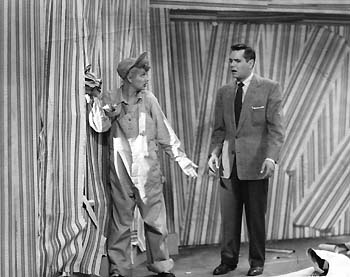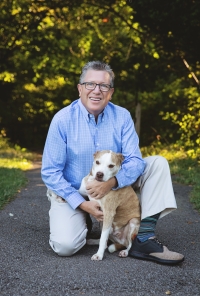One-Armed Paper Hanger
 Our conundrum was not solvable. I met Martha after she was diagnosed with malignant melanoma, a particularly lethal form of skin cancer, and refused to undergo the recommended surgery. In her case the disease, instead of spreading to involve other organs as melanoma usually does, grew out from its origin on her forearm, creating a thick cobblestone rind that, with the accompanying blockage of the lymph channels, gradually produced an elephantine upper limb with progressively impaired movement and function. She and
Our conundrum was not solvable. I met Martha after she was diagnosed with malignant melanoma, a particularly lethal form of skin cancer, and refused to undergo the recommended surgery. In her case the disease, instead of spreading to involve other organs as melanoma usually does, grew out from its origin on her forearm, creating a thick cobblestone rind that, with the accompanying blockage of the lymph channels, gradually produced an elephantine upper limb with progressively impaired movement and function. She and her daughter ran an interior design and decorator service, she did most of the labor, so I could not help but call to mind the metaphor my dad used, describing an overwhelmed employee as “busy as a one-armed paper hanger.”
her daughter ran an interior design and decorator service, she did most of the labor, so I could not help but call to mind the metaphor my dad used, describing an overwhelmed employee as “busy as a one-armed paper hanger.”
At that time, though chemotherapy was occasionally slightly effective and treatments that activated the immune system were showing early promise, I had no good treatment to offer her. But since her cancer, though large and growing, remained localized to her arm, surgery was the best option for treatment, and could be lifesaving. But now, after the extensive involvement of her arm, any hope of cure would need to be more extensive, even radical, with amputation of most of her arm.
Martha understood everything in our conversations, she could recite back to me the statistics and recommendations, she knew what she was up against; she tried various alternative therapies including some caustic topical agents, and on a couple of occasions brought in a piece of tissue that had come loose from her arm, preserved in a mason jar with rubbing alcohol. It was interesting that, though she followed few of my recommendations, she kept her appointments with me and seemed to appreciate my opinions and caring.
The primary point for Martha was her belief that her only hope for cure was by divine miracle, and she and her faith community repeatedly prayed, hoped, and trusted that this would occur. She told me that having surgery, especially if it removed her arm, would demonstrate that she did not have enough faith and that this would prevent God from being able to produce the wonderworking act of making her cancer disappear. It was difficult for me not to argue that an omnipotent God could grow back an arm as easily as cure a disease, not to tell the fable of the man who drowns on his rooftop waiting for divine rescue, after refusing help from a jeep, a boat, and a helicopter. It was her faith, her body, her life; my job was to recommend, to treat as she would allow, to relieve distressing symptoms as best as I could, to remain present for her; maybe that is what kept her coming back.
For medical practitioners, the “miracle” question is a difficult one. It comes up in oncology often, but it is part of the conversation in many desperate situations: in intensive care units, perinatal diagnostic clinics, hospice units, and many more. When people confront an insurmountable obstacle, they are often tempted to hope for a magical answer, a fairy godmother, or an awakening from a bad dream. This is a normal response, though most people, even while wishing for the supernatural marvel, weigh the options, choose to take or forego the treatments, and make the choices and plans necessary for the usually expected outcome. But, as in Martha’s case, consistent with what hospital and hospice chaplains have repeatedly told me, when the God-miracle argument is made, there is no effective counter.
Eventually she had a deforming amputation of her right arm and shoulder, done when even the surgeon thought it was probably too late, and the pathology examination of the tissue showed that there was cancer left behind. The melanoma spread and she died not long after. No miracle happened that we could see, anyway. Who knows? Maybe she had been right in the first place after all?

